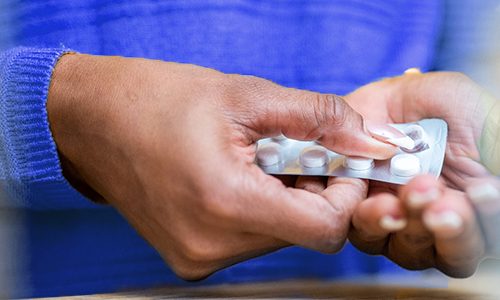By March 2020, the warning signs were evident, sending shockwaves through the U.S. healthcare system. If the novel coronavirus pandemic continued on its predicted path, American hospitals would need more inpatient beds than currently available. A lot more. And quickly.
In New York alone, the governor estimated the state would need 110,000 more beds to meet demand. That announcement was made after the number of New York COVID-19 cases rose 50% in one day. Solutions ranged from building temporary tent hospitals to converting churches into intensive care units.
Meanwhile, an East Coast-area hospital was preparing for its own anticipated volume and capacity challenges. That’s when remote patient monitoring (RPM) emerged as an idea that could be implemented at the hospital for an immediate impact in a short timeframe.
Inventive thinking with a long list of benefits
Clinical leaders believed a tech-enabled, nurse-supported remote health monitoring program could be used to help discharge still-symptomatic COVID-19 patients sooner and safely, reducing their lengths of stay. It could also play an important role in preventing hospital readmissions during patients’ recovery.
If the program worked, both factors could free up inpatient resource capacity.
In addition, studies had previously shown RPM initiatives could improve not only treatment adherence and access to ongoing care, but also patient satisfaction and healthcare costs.
The concept couldn’t solve all of the capacity challenges, but it would be a low-risk, high-reward effort in a time when out-of-the-box thinking was crucial.
Health monitoring technology + one-on-one human outreach
As the development of the hospital’s COVID-19 RPM program began, Carenet Health was enlisted as an external care partner to provide around-the-clock nurse-to-patient clinical support. Proven RPM technology was provided by Philips.
The program was made up of a 14-day post-discharge protocol designed to keep in touch with patients who had been hospitalized for virus symptoms and complications.
At time of discharge, COVID-19 patients were given kits to monitor their temperature, blood pressure and oxygen saturation while recovering at home. If a patient’s data exceeded evidence-based parameters set by the hospital, a call to action was triggered for a Carenet telehealth registered nurse (RN) to evaluate and validate the data and contact the patient for next steps. Subsequent actions could be recommending the patient continue to self-monitor, talk with their monitoring physician, return to the emergency department or call 9-1-1 for immediate, life-saving emergency care.
Positive RPM results
Releasing patients into a remote monitoring program provided an efficient way to track patient recovery and put patients in the best position to regain health stability.
While exact numbers are not available for publication, readmissions in the program were exceedingly rare. The Carenet RN team—trained to deliver personal, compassionate and knowledgeable care—reported that patients said they felt well cared for, especially when experiencing recovery setbacks. And at the hospital, more resources could now be used to help more acute patients, faster.
At the end of a pilot initiative, 90 COVID-19 patients had been monitored in the program. The hospital is still using the program strategy today.
Lessons and insights
Both payers and providers have long been interested in remote health monitoring and its use cases. This project provided positive lessons gained during a tumultuous time—offering insights that other health systems and hospitals in other COVID-19 hotspots around the nation could leverage.
John Erwin, CEO of Carenet Health, said it was a privilege for Carenet to be a part of demonstrating the value of remote patient monitoring, backed by 24/7 clinical support, during the crisis.
“There’s so much we don’t know about this virus—including the severity of lingering symptoms and the relapse potential a patient may experience after discharge from inpatient care,” he said. “We’re seeing that this type of support is key to helping patients recover in their own homes and identifying any issues for early preventive action.”
___________
Want to learn more? Carenet Health solutions serve millions of healthcare consumers each year through telehealth, clinical support, advocacy and healthcare engagement services. Our nurse triage teams provide clinical support for a variety of additional remote patient monitoring efforts, as well—from high-risk pregnancies to post-stroke care. To put our resources to work for your organization, please contact our business development team today.



